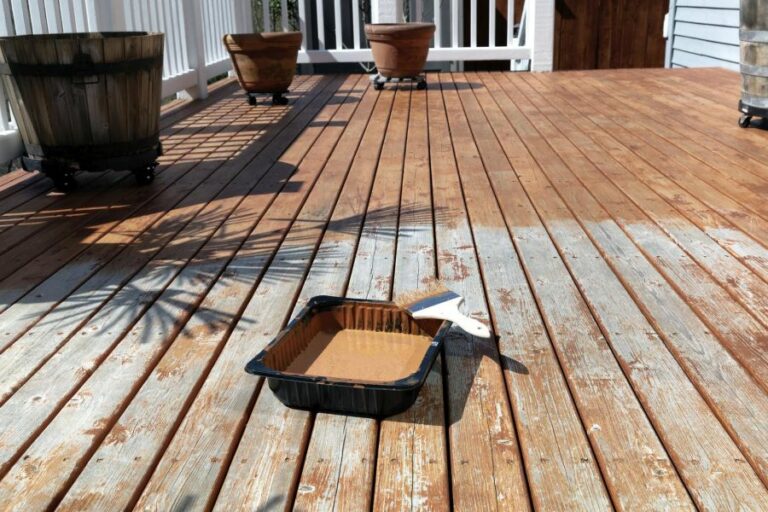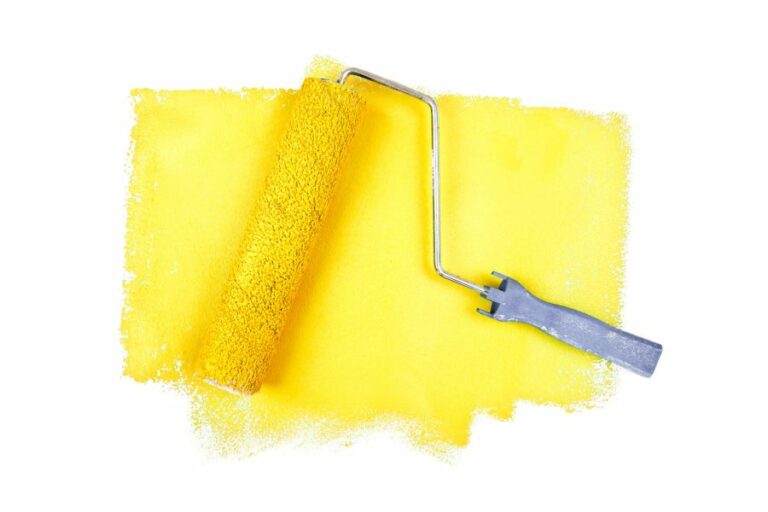What Outdoor Paint Sticks To Plastic, 25 Things You Should Know
Are you tired of the dull and drab look of plastic surfaces outdoors? It is possible to add a vibrant splash of color with the right paint that sticks to plastic! Join me as I explore various outdoor paints that adhere to difficult plastic surfaces, ensuring long-lasting results and transforming your dreary backyard into a lively oasis. Don’t let your plastic furniture fade into the background anymore.
What outdoor paint sticks to plastic:
This guide, comparing acrylic and oil-based paints, explores the most effective outdoor paints for adhering to plastic surfaces. It offers application tips, emphasizing the importance of surface preparation and using primers specifically for plastics. Lastly, it highlights the value of a protective clear coat to ensure the longevity and vibrance of the outdoor masterpiece, suggesting acrylic and polyurethane options.

Learn the secrets to perfect paint adhesion for plastic surfaces! Discover the best types of outdoor paint and essential prep work to guarantee a smooth, long-lasting finish. Transform your plastic items with simple painting techniques and tips. Read on!
Contents
- 1 Identifying the Most Effective Outdoor Paint for Adhering to Plastic Surfaces
- 2 Which Type of Paint Will Adhere Effectively to Plastic Surfaces?
- 3 Is Outdoor Acrylic Paint Effective in Adhering to Plastic Surfaces?
- 3.1 • A Primer on Polymers: The Building Blocks of Plastic
- 3.2 • An Exposition on Acrylic Paint: Delicacies and Dynamics
- 3.2.1 – The Crucible of Compatibility
- 3.2.1.1 Plastic Taxonomy: Deciphering the Hierarchy
- 3.2.1.2 The Art of Preparation: Transmuting Surfaces for Receptacle Readiness
- 3.2.1.3 A Prelude to Painting: The Primer Predicament
- 3.2.1.4 Pursuing Perfection: Selecting Stalwart Outdoor Acrylic Paint
- 3.2.1.5 The Sanctuary of Sealants: Curating a Bona Fide Barrier
- 3.2.2 – Conclusion: The Tantalizing Tango of Outdoor Acrylic Paint and Plastic
- 3.2.1 – The Crucible of Compatibility
- 4 Is it Possible to Apply Paint on Outdoor Plastic Surfaces?
- 5 Is Exterior Latex Paint Effective in Adhering to Plastic Surfaces?
Identifying the Most Effective Outdoor Paint for Adhering to Plastic Surfaces
A brightly-colored lounge chair or a well-designed garden ornament will greatly enhance the aesthetic appeal of your outdoor abode. For these beautifications to last, though, it’s essential to apply the proper paint to your plastic surface.
• Choosing the Ideal Finish: Acrylic vs. Oil-Based Paints
When it comes to adhering to plastic, your choice of paint will greatly influence the final outcome. While some painters swear by traditional oil-based alternatives, others extol the virtues of acrylics.
– Acrylic Paints: Vibrant Versatility
Acrylic paints rapidly rose in popularity due to their water-soluble nature and expansive chromatic range. Acrylic finishes perpetually adhere to a variety of surfaces, including plastic. Their multifarious uses, coupled with exceptional durability, make them the top choice for many outdoor enthusiasts.
Acrylic’s rapid drying time can be both a boon and a burden; while intermediate painters might find it somewhat laborious, experienced artisans will find lightning-fast application easier.
To assure the longevity of the coating, it is imperative to choose specifically labeled “exterior” or “outdoor” acrylic paint.
– Oil-Based Paints: Seize the Traditional Appeal
Oil-based paints represent an age-old option that delivers a refined and lustrous finish. Though slower drying than acrylics, they provide exceptional adhesion and are typically characterized by their striking glossiness.
Patience during drying is a prerequisite with these paints, but the results often justify the wait.
For outdoor plastic surfaces, opt for specific “plastic” or “vinyl” oil-based variants. These formulations are specifically concocted for superior adhesion and resistance to harsh weather conditions.
Ultimately, your choice of acrylic or oil-based paint will hinge upon personal preference, experience, and the desired outcome. Remember that the inclusion of a tenacious primer will bolster the adhesion and durability of both types of paints.
• Envisioning Your Technique: Application Tips for Flawless Results
To attain a visually striking and long-lasting finish, the application process must be carried out with scrupulous care. The following vital tips will guide you on a smooth path to success:
1. Surface Preparation: The Key to Adhesion
The surfaces of plastics are notorious for gathering grime, dirt, and grease substances that can hinder paint adhesion. Thoroughly cleaning the plastic with a mild detergent and warm water will ensure that the paint has a pristine, uncontaminated base to cling to.
2. Primer Power: Boost Your Bond
The application of a primer is a strategic method to galvanize the bond between paint and plastic. Primers engineered explicitly for plastics will lay a robust foundation and contribute to the coating’s longevity.
Be sure to choose “plastic” or “vinyl” designated primers to avoid any compatibility conundrums.
3. Master the Brushstrokes: Balancing Speed and Accuracy
Both acrylic and oil-based paints demand a steady hand and well-honed technique. While acrylics require swift and precise movements, oil-based variants call for a more leisurely approach. The use of high-quality brushes or paint sprayers will go a long way in achieving a professional-grade finish.
• The Finishing Touch: Selecting a Protective Clear Coat
After investing time and meticulous effort into creating an eye-catching outdoor masterpiece, it’s crucial to protect your work with a superior clear coat.
By selecting an appropriate sealant explicitly designed for outdoor plastic surfaces, you can safeguard your design against the elements and ensure its vibrance remains undiminished. Consider the following types of clear coats:
1. Acrylic Clear Coats: Light and Strong
Acrylic clear coats are renowned for being lightweight and stress-resistant, providing a strong level of protection without compromising the integrity of the paint. Look for “outdoor” or “exterior” labeled variants and apply them as directed to ensure optimal endurance.
2. Polyurethane Clear Coats: Battle the Elements
Polyurethane clear coats are a popular choice for outdoor applications due to their robust resistance to weather extremes. By forming a flexible yet strong barrier, polyurethane coatings elongate the lifespan of your artistic endeavor and help maintain its pristine appearance.
In conclusion, the world of outdoor paints that stick to plastic is abundant, with options that cater to diverse styles and preferences. By carefully selecting the right type of paint, primer, and clear coat, you’ll be well-equipped to transform any outdoor plastic surface into a dazzling and resilient focal point.
Which Type of Paint Will Adhere Effectively to Plastic Surfaces?
• Narrowing Down the Best Paint Choices for Plastic Materials
– Acrylic Paints: The Gold Standard
Acrylic paints, known for their lasting adhesion and adaptability, have been the go-to choice for many artists and DIY enthusiasts when working with plastic surfaces. These water-based paints offer a bevy of advantages, such as:
- Excellent Durability: Acrylic paints form a robust, resilient layer on plastic surfaces, making them resistant to chipping and flaking.
- Vibrant Color Spectrum: The chromatic gamut of acrylics is expansive, allowing for unbridled creativity and impressive hues.
- Quick Drying Time: The facile evaporation of water in acrylic paints results in reduced waiting periods between coats.
– Enamel Paints: A Strong Contender
Akin to acrylics in their tenacity, enamel paints are another viable option for embellishing plastic substrates. The benefits of enamel paints encompass the following:
- High Gloss Finish: Enamel paints are renowned for their lustrous sheen, injecting plastic projects with a touch of visual allure.
- Sturdy Composition: Enamels create a hard-wearing veneer on plastic, enhancing its longevity and sturdiness.
- Resistance to External Factors: Atmospheric vicissitudes hold little sway over enamel paints, ensuring color retention and surface protection.
• A Step-By-Step Guide to Preparing Plastic Surfaces for Paint
– Step 1: Thorough Cleaning
A meticulous cleaning of the plastic substrate is indispensable, as slight impurities can hinder optimal paint adherence. Use a lint-free cloth dampened with a mild detergent and water solution to expunge dirt and grime. A subsequent rinse and air-drying session are crucial to eliminate any lingering residue.
– Step 2: Sanding the Surface
To ensure impeccable paint adhesion, it is imperative to abrade the plastic surface lightly using fine-grit sandpaper or emery cloth. This scuffing process engenders a slightly roughened texture, soliciting a more secure bond between plastic and paint.
– Step 3: Priming the Surface
The introduction of a primer layer acts as a harbinger for a triumphant painting endeavor. Utilize a plastic-appropriate primer to establish a cohesive foundation for subsequent paint layers. Allow ample time for the primer to cure, resulting in a steadfast undercoat.
– Step 4: Selecting the Proper Brushes
Marshal the finest quality brushes, preferably synthetic bristle brushes, for the commencement of your painting task. As the adage goes, “A workman is only as good as his tools,” so this procurement must not be taken lightly.
A judicious selection of brush types and sizes will facilitate immaculate application and nuanced detailing.
• Expert Tips for Painting Plastic with Panache
– Tip #1: Diligence During Drying
Patience, although taxing, is of paramount importance when painting plastic. Deliberate, measured intervals between coats, coupled with scrupulous adherence to drying times, will yield a pristine final product.
– Tip #2: Establishing Environmental Control
A fastidious approach to environmental conditions, such as temperature and humidity, can dramatically affect the outcome of painting jobs—endeavor to paint in temperate, arid settings for salubrious adhesion and curing.
– Tip #3: Technique Training
Adept brushwork is the linchpin of a successful painting undertaking. Honing dexterity and finesse with brush strokes, feathering, and stippling can unlock a plethora of artistic possibilities and transformative results.
• Conclusion
In summary, the use of acrylic or enamel paints is ideal when embarking on any plastic painting project.
Rigorous adherence to guidelines for surface preparation, proper tools, and environmental considerations, coupled with the acquisition of skillful techniques, augurs well for the creation of masterfully painted plastic objets d’art.
Is Outdoor Acrylic Paint Effective in Adhering to Plastic Surfaces?
• A Primer on Polymers: The Building Blocks of Plastic
Delving into the realm of polymers, we unearth the fundamental components that construct the versatile material we know as plastic. The complex structure of these macromolecules grants a plethora of distinctive properties.
A plethora of these compounds ranging from rigid and durable to flexible and pliable have become ubiquitous in our daily lives. Grasping the essence of their construction paves the way to unfurling the enigmatic dance between outdoor acrylic paint and various plastic types.
• An Exposition on Acrylic Paint: Delicacies and Dynamics
Acrylic paint, a devilishly charming medium, brims with water-soluble characteristics and swiftly metamorphoses into a water-resistant film upon drying.
Notorious for its adherence to surfaces, acrylic paint is often the weapon of choice for artwork and prime outdoor projects. Nevertheless, coaxing its innately tenacious nature to clutch onto plastic can pose a vexing dilemma.
– The Crucible of Compatibility
A compendium of variables lies at the foundation of a successful union between outdoor acrylic paint and plastic. The conundrum of compatibility unfolds through the following factors:
- Type of Plastic
- Surface Preparation
- Primer Application
- Paint Selection
- Sealant Use
Each element interlocks with unwavering precision, morphing into a symphony of steps that imparts longevity to the bond between outdoor acrylic paint and plastic.
Plastic Taxonomy: Deciphering the Hierarchy
Pinpointing the precise type of plastic targeted for adhesion is vital in excavating the depths of its compatibility. The vast labyrinth of polymers encompasses several plastic varieties amenable to outdoor acrylic paint. Among this treasure trove, we find:
- Polyvinyl Chloride (PVC)
- High-density Polyethylene (HDPE)
- Polystyrene (PS)
- Acrylonitrile Butadiene Styrene (ABS)
Identifying the specific breed of plastic bestows essential insights into its peculiarities and propensities, thereby guiding paint application and surface planning.
The Art of Preparation: Transmuting Surfaces for Receptacle Readiness
An impeccably prepped canvas is the bedrock upon which the alchemy of outdoor acrylic paint and plastic transpires. Ensure meticulous cleanliness through a spirited sojourn with soap and water, eliminating greasy palimpsests and residual debris.
Sanding the surface recruits texture, facilitating a secure hideaway for the paint to nestle within. Employing a tactful, dry cloth whisks away dust, providing a surreal landscape for the ensuing action.
A Prelude to Painting: The Primer Predicament
The wizardry of primer in nurturing an idyllic nesting ground for outdoor acrylic paint on plastic is unparalleled. A thin coat of plastic primer spawns a sumptuous banquet for the paint to consume with euphoric ease.
Amidst the labyrinth of primers, those specifically tailored to plastic surfaces, often flaunting adhesion promoters, prove to be an ardent ally.
Pursuing Perfection: Selecting Stalwart Outdoor Acrylic Paint
Out of the abyss of outdoor acrylic paints, a handful stands tall, beaming with the potential to transform plastic surfaces into ravishing rhapsodies. Exemplary options that meld effortlessly with plastic substrates are those with the following:
- High-quality constituents
- Enamel-based formulas
- Enduring durability
- Vibrant hues
These properties converge to offer outstanding longevity and an enchanting aesthetic opus.
The Sanctuary of Sealants: Curating a Bona Fide Barrier
A final flourish of sealant can act as a valiant crusader, championing the union between outdoor acrylic paint and plastic. Acrylic sealants provide a glistening shield, safeguarding the luxurious veneer from undesirable scuffs, scratches, and weathered woe.
– Conclusion: The Tantalizing Tango of Outdoor Acrylic Paint and Plastic
Ultimately, the magnetic allure of outdoor acrylic paint successfully clinging to plastic is contingent upon traversing a series of elaborate steps, from discerning the plastic-type to procuring a formidable sealant.
Armed with this newfound knowledge, one can confidently embark on a creative odyssey to breathe life into plastic surfaces through the tantalizing tango with outdoor acrylic paint.
Is it Possible to Apply Paint on Outdoor Plastic Surfaces?
A well-preserved and immersive outdoor space is something many of us covet. Refreshing your furniture’s aesthetic by painting plastic for outdoor use is one way to rejuvenate your environment. Let’s explore the labyrinthine process of painting plastic surfaces.
• Preparing the Paradox: Selecting Appropriate Plastic Objects
Before diving headfirst into this technicolor endeavor, discern whether the objects hold the capacity for plastic paint adhesion. Examine the composition of various plastic items, such as PVC, polyethylene, or polypropylene, which require an idiosyncratic approach.
Caveat: Certain objects, such as children’s playsets, could release toxic particulates upon painting. Evaluate the safety quotient before embarking upon this journey.
• A Symphony of Surfaces: Priming and Sanding Plastic Items
Harboring fruitful results necessitates a meticulously prepared plastic surface. The two crucial steps sanding and priming, call for unwavering attention and diligent effort.
– Divergent Degrees of Abrasion: Sanding the Plastic
Select sandpaper with the apt grit (level of abrasiveness) to eliminate unevenness and foster a smoother surface.
- Coarse sandpaper (80100 grit): Ideal for extirpating persistent stains and tenacious residue.
- Medium sandpaper (150180 grit): Conducive for sanding off minor flaws and blemishes.
- Fine sandpaper (220240 grit): For a perfectly polished, smooth facade.
Insider Tip: Employ circular motions while sanding to curtail the advent of scratch marks.
– The Vanguard of Adhesion: Priming the Plastic
Utilize bonding primers compatible with the composition of your plastic object. These specialized concoctions galvanize a nigh-indissoluble connection between paint and surface, acting as a foundation for the ensuing coats.
• A Cascade of Hues: Painting Plastic with Distinct Techniques
Different painting techniques yield multifarious outcomes. Explore with alacrity to discern the sui generis method that coalesces with your vision. Contemplate the merits of the following:
– Capricious Creations: Spray Painting
Spray paints confer speed and uniformity to your work of art:
- Acrylic aerosols: Balanced durability and vibrancy suit a myriad of situations.
- Enamel sprays: Offers paramount resilience for objects which withstand rigorous usage.
- Specialty paints: Specified for individual plastic types or certain effects (like the metallic or textured finish).
Brocard: Hold the can 1012 inches away from the object and apply multiple, thin coats.
– The Daedalian Dance: Brush Painting
Entreating immaculate control and precision, brush painting caters to detailed endeavors:
- Acrylic paints: Provides an exquisite balance between pigmentation, resistance, and affordability.
- Enamel paints: Robust option that bequeaths added protection against inclement conditions.
Sage Suggestion: Utilize high-quality, synthetic brushes to avert bristle detachment.
– Resplendent Revelations: Airbrushing
Airbrushing bestows an unparalleled level of fidelity, allowing you to actualize intricate and multifaceted designs:
- Acrylic paints: Ratified for their vibrant colors and pliancy, they remain potently captivating when thinned with the correct medium.
Eureka Moment: Experiment with varying air pressure and dilution to unravel novel effects.
• The Magnum Opus: Bestow Your Masterpiece Upon the World
In the wake of metamorphosing your plastic creation with paint, grant it ample opportunity to dry and cure. Tempt not the fates with impatience; nectarous outcomes demand patience and fervor.
Revel in the fruits of your labor, and may your plastic adornment vivify your outdoor space with unabated splendor!
Question | Answer |
|---|---|
Can you paint plastic for outdoor use? | Yes, you can paint plastic for outdoor use, but it is essential to use the appropriate type of paint and preparation techniques to ensure proper adhesion and durability. Proper surface preparation (cleaning and priming), using paints designed for plastic or choosing paints made for outdoor use (such as acrylic, oil-based, or spray paint), and applying a clear protective sealer will help ensure the longevity and appearance of the painted plastic. |
Is Exterior Latex Paint Effective in Adhering to Plastic Surfaces?
Indeed, when it comes to coating plastic surfaces, the quest for the perfect paint remains a hot topic. In particular, whether or not exterior latex paint adheres well to plastic takes center stage in this discussion.
Let us examine this pressing query, delving into the intricacies of paint formulation and surface compatibility to unveil some key considerations.
• Understanding Latex Paint Composition: A Crucial Factor
To assess the feasibility of utilizing exterior latex paint on plastic, one must first comprehend the fundamentals of its composition. Latex paint, renowned for its versatility, durability, and ease of application, is comprised mainly of four elements:
- Binder: The adhesive agent that adheres to surfaces and imparts flexibility to the dried paint film.
- Pigment: A powdery substance that produces color and opacity in paint.
- Solvent: A liquid carrier that establishes the correct viscosity to permit the application of the paint.
- Additives: Typically utilized in small quantities, these constituents bestow specific attributes to the paint, such as improving flow, preventing mildew growth, and enhancing UV resistance.
Notably, the binder utilized in latex paint is a synthetic resin derived from petroleum products, predominantly acrylic or vinyl. As the solvent evaporates upon application, the remaining binder forms a solid film that provides a barrier against moisture and other environmental factors.
• The Challenges of Plastic Surfaces: Adhesion and Compatibility
Plastic surfaces pose various challenges for paint adhesion due to their unique characteristics:
- Smoothness: Plastic’s inherent slickness can hinder the paint from properly bonding to the surface.
- Thermal Expansion: Plastics are known to exhibit high coefficients of expansion, meaning they will contract and expand in response to temperature fluctuations. This may lead to paint cracking or peeling if the paint’s flexibility is insufficient.
- Chemical Resistance: Plastic surfaces often have an inherent resistance to solvents, potentially impeding the paint’s ability to form a sufficient bond.
These particularities make it essential to select an appropriate paint formulation and follow proper surface preparation techniques.
• Prime Solutions: Surface Preparation and Adhesion Promoters
The key to successfully applying exterior latex paint to plastic lies in meticulous surface preparation and the use of adhesion-promoting materials:
1. Cleaning and Degreasing
Begin by thoroughly cleaning the plastic surface to eliminate any dirt, grease, or contaminants that could impede paint adhesion. Utilize a mild detergent and water solution, taking care to rinse it completely and allow the surface to dry.
2. Surface Scuffing
To enhance the bonding capacity between the latex paint and the plastic, lightly scuff the surface using a fine-grit sandpaper or abrasive pad. This process will make the surface more receptive by creating a fine texture, enabling the paint to adhere better.
3. Adhesion Promoting Primer
A crucial component to establishing a tenacious bond between exterior latex paint and plastic is the application of an adhesion promoter or specialty plastic primer.
These products contain components designed to interact with the plastic surface, forming a tenacious bond that helps the topcoat adhere effectively.
• Moving Forward: Proper Application and Considerations
With the right preparation and materials, exterior latex paint can stick to plastic surfaces. Nevertheless, conducting a small-scale test to ensure compatibility before fully embarking on the painting process is wise.
Additionally, to augment the paint’s longevity, opt for a high-quality latex paint specifically formulated for exterior use, as it will provide enhanced durability and flexibility.
In conclusion, while ensuring exterior latex paint adheres to plastic may be intricate, understanding the salient factors and meticulous surface preparation techniques will yield gratifying results.
Embrace the diverse world of paint with confidence, knowing that exterior latex paint can indeed stick to plastic when properly applied.







